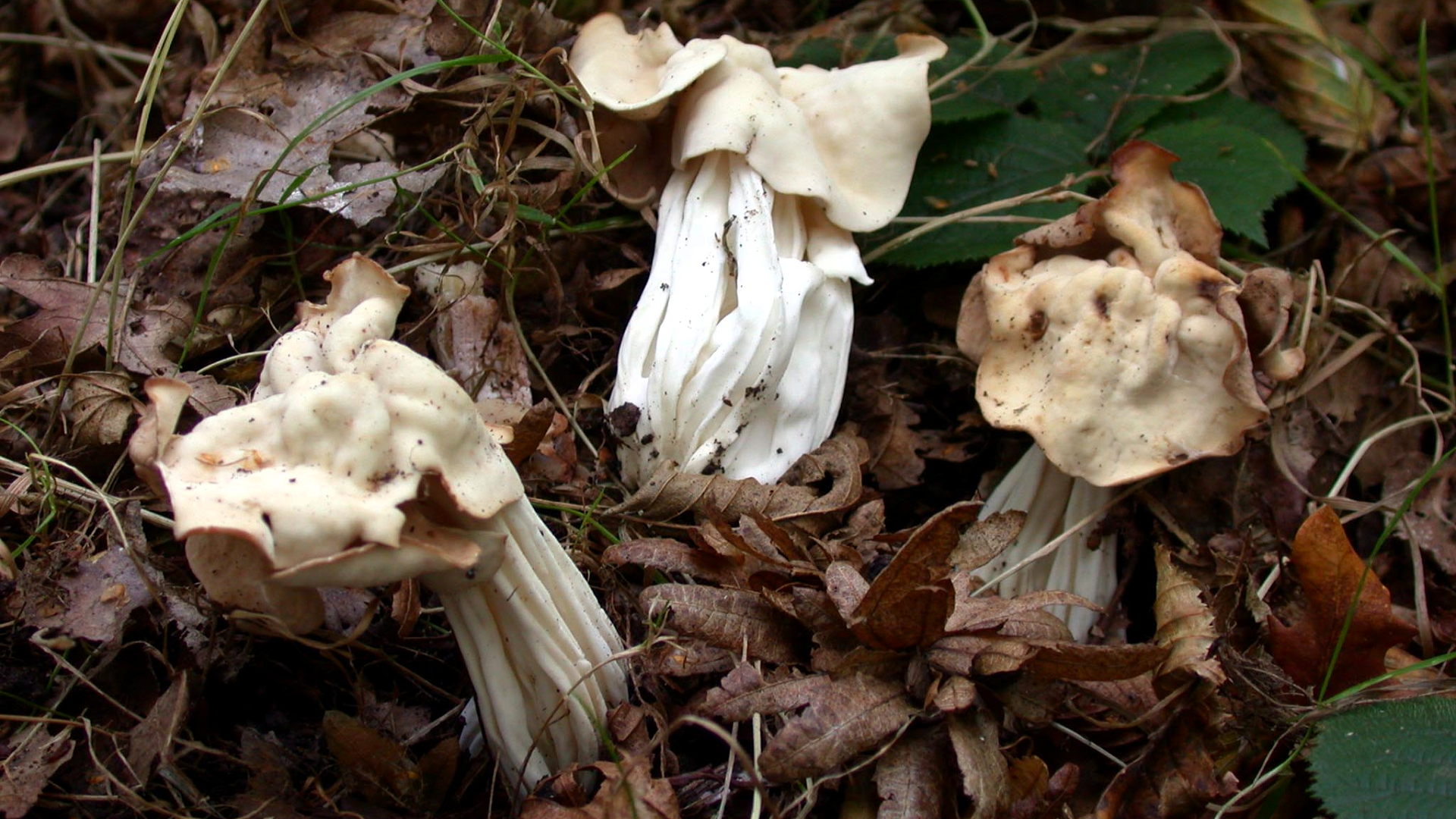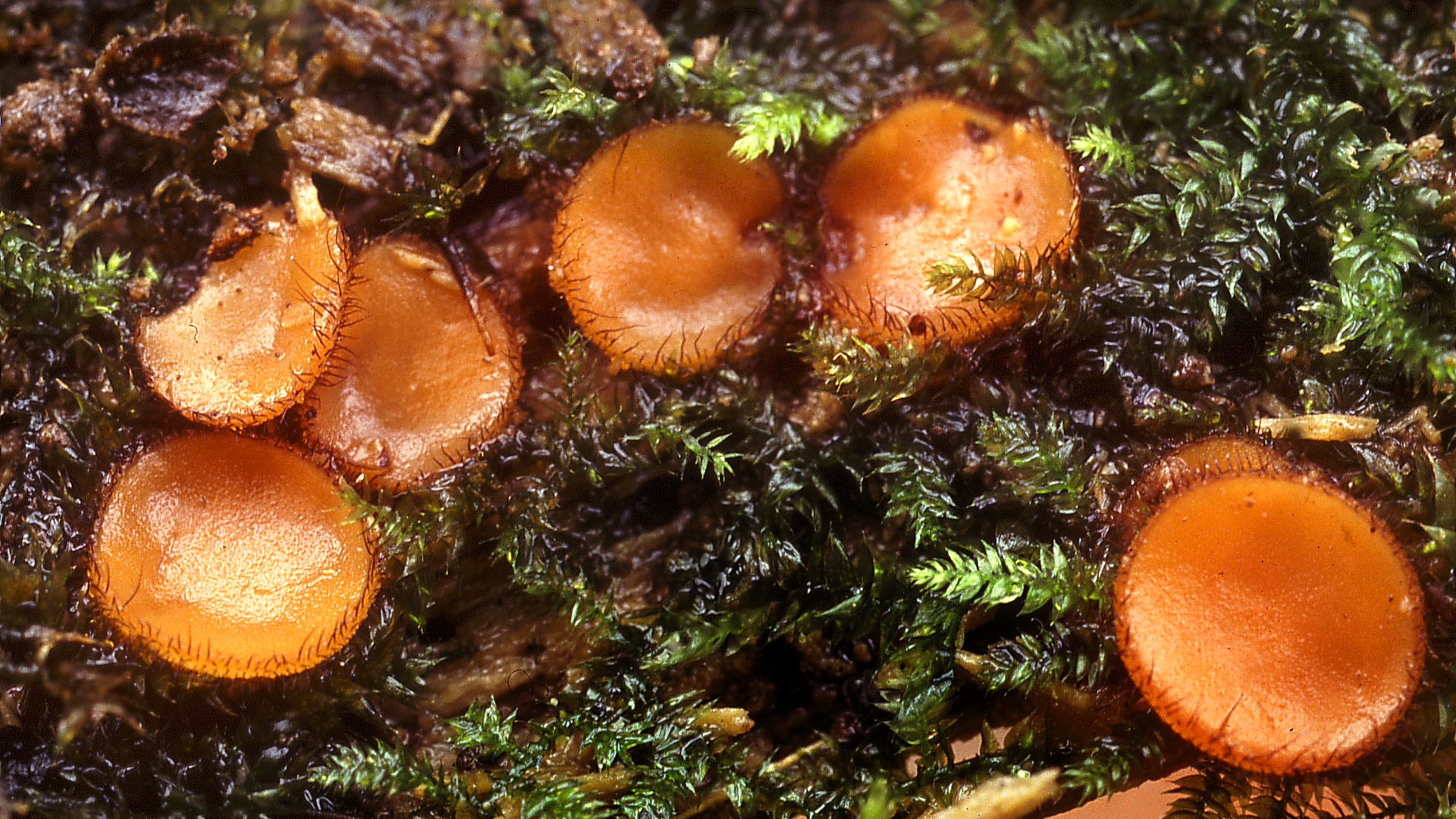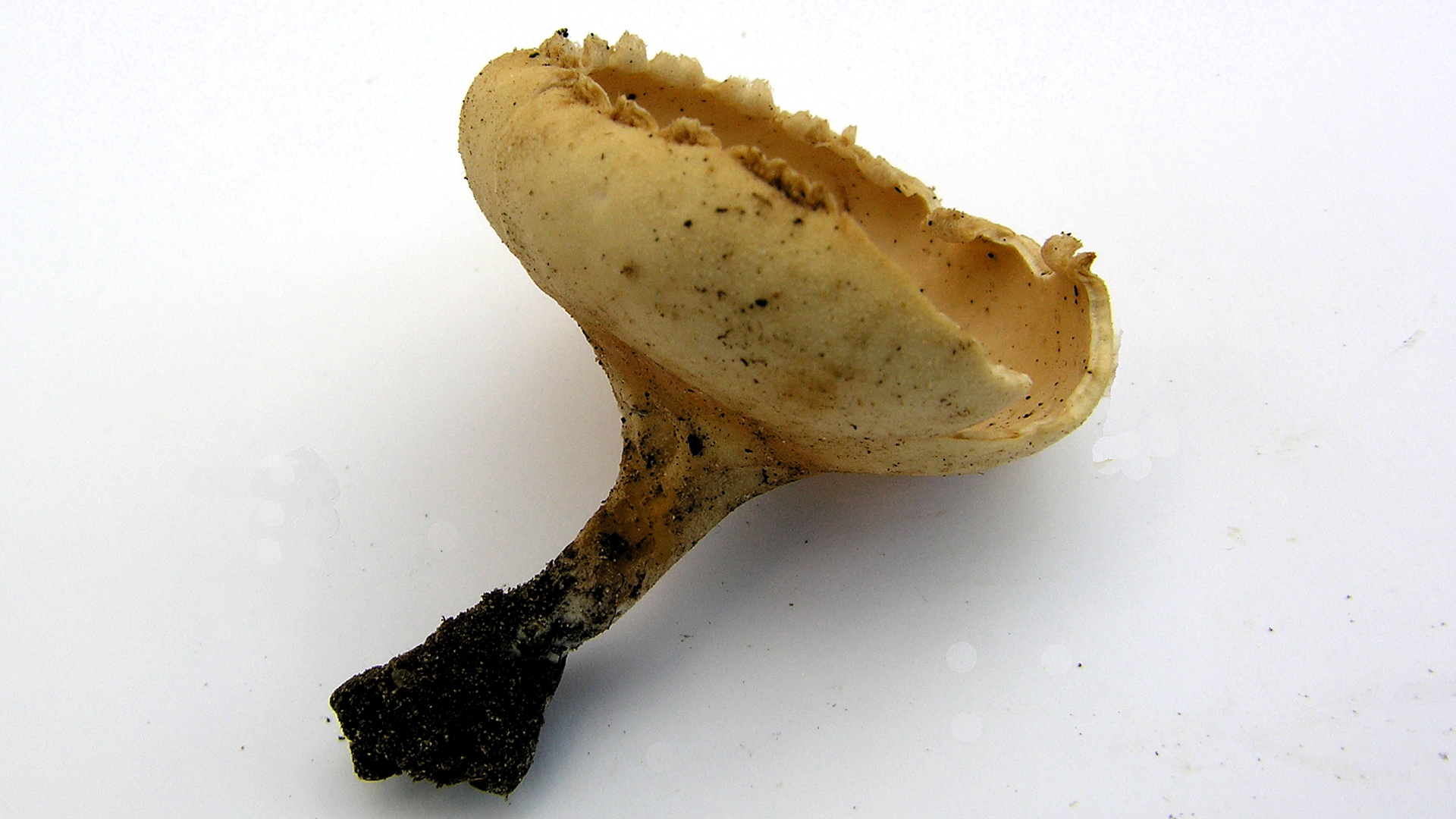Ascomycetes are a large and diverse group of fungi that create spores inside a microscopic sac. They are identified by this unique spore-producing structure, which is often contained within larger, visible cup or flask-like fruiting bodies.

Name: White Saddle Helvella crispa
Description: Creamy-white fungus that has a wax-like texture and usually appears with a very distorted cap.
Habitat: Found near the woodland paths in leaf litter during autumn. Associated with hornbeam and holly.
#
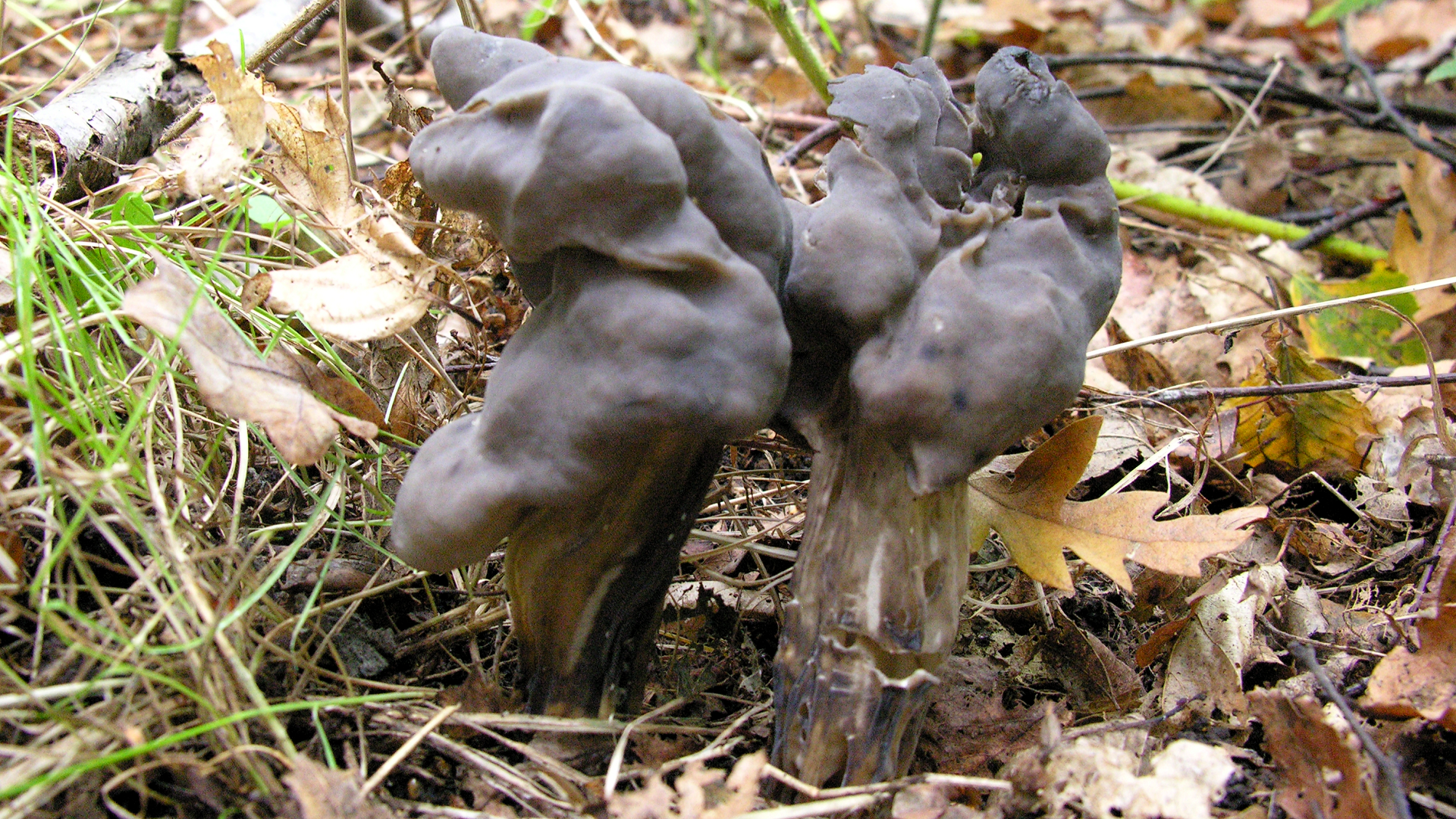
Name: Elfin Saddle Helvella lacunosa
Description: Lead-grey, with caps, 2 - 4cm across, that are often distorted. This fungus stands 4 - 10cm tall.
Habitat: Found in leaf litter of broadleaf trees. Has a preference for rich soil and burnt ground.
#

Name: Short-haired Disco Lachnum brevipilosum
Description: Tiny, white caps and stipes. The name refers to the short hairs that are visible on the apothecia (cup-shaped fruiting bodies).
Habitat: Saprobic fungus with very tiny fruiting bodies that grow in large groups underneath rotten logs.
#

Name: Common Eyelash Scutellinia scutellata
Description: Tiny saprophytic fungus, <=4mm across, with eyelashes around the edge of its orange cups.
Habitat: Grows on well-rotted wood in damp habitats.
#
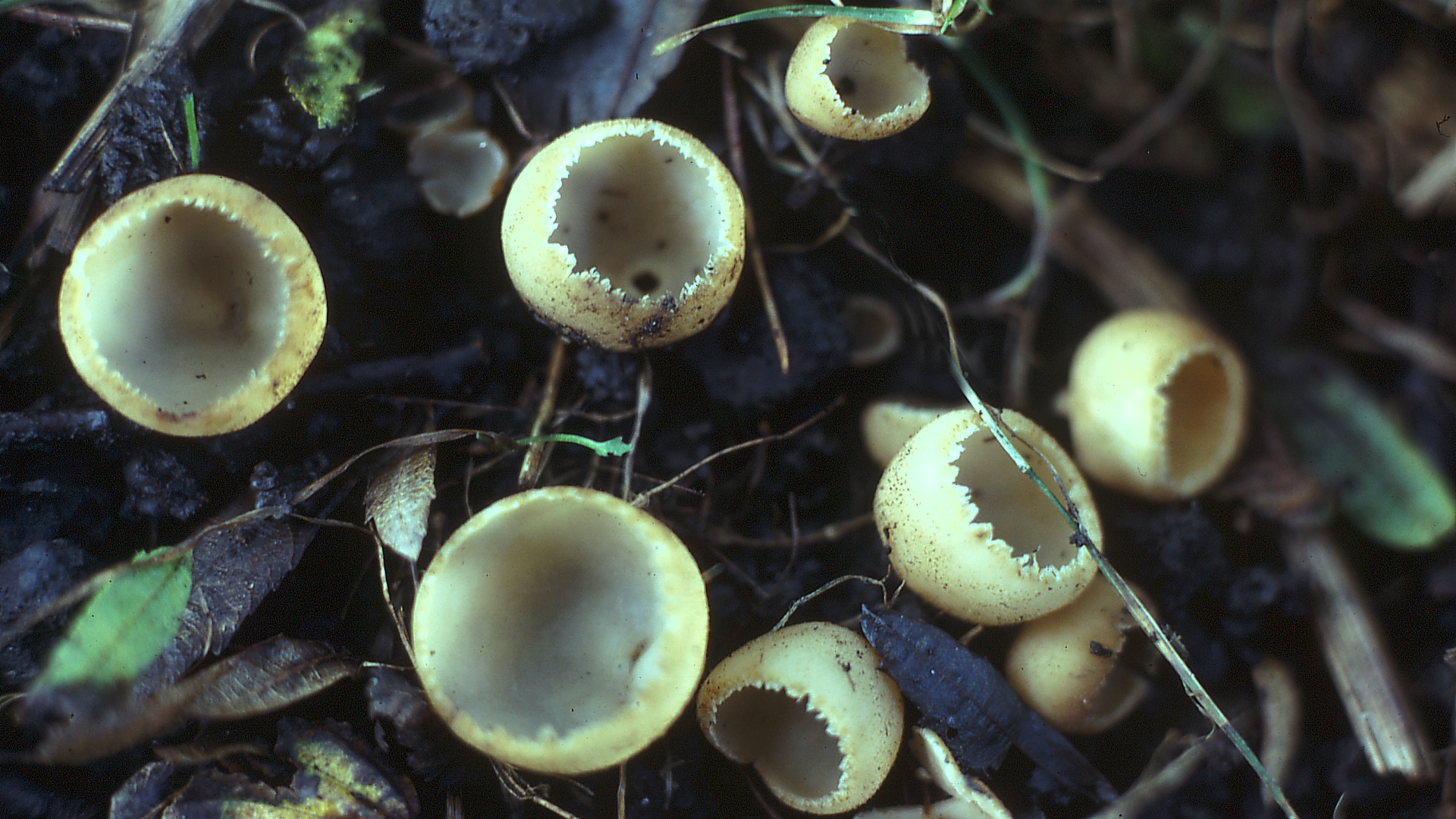
Name: Greater Toothed Cup Tazzeta catinus
Description: The tiny caps, 1.5 to 5cm across, are often gregarious. True identification is near impossible without microscopic examination due to similar species.
Habitat: Found on soil, rotten wood and woodchips. Associated with beech and hornbeam.
#
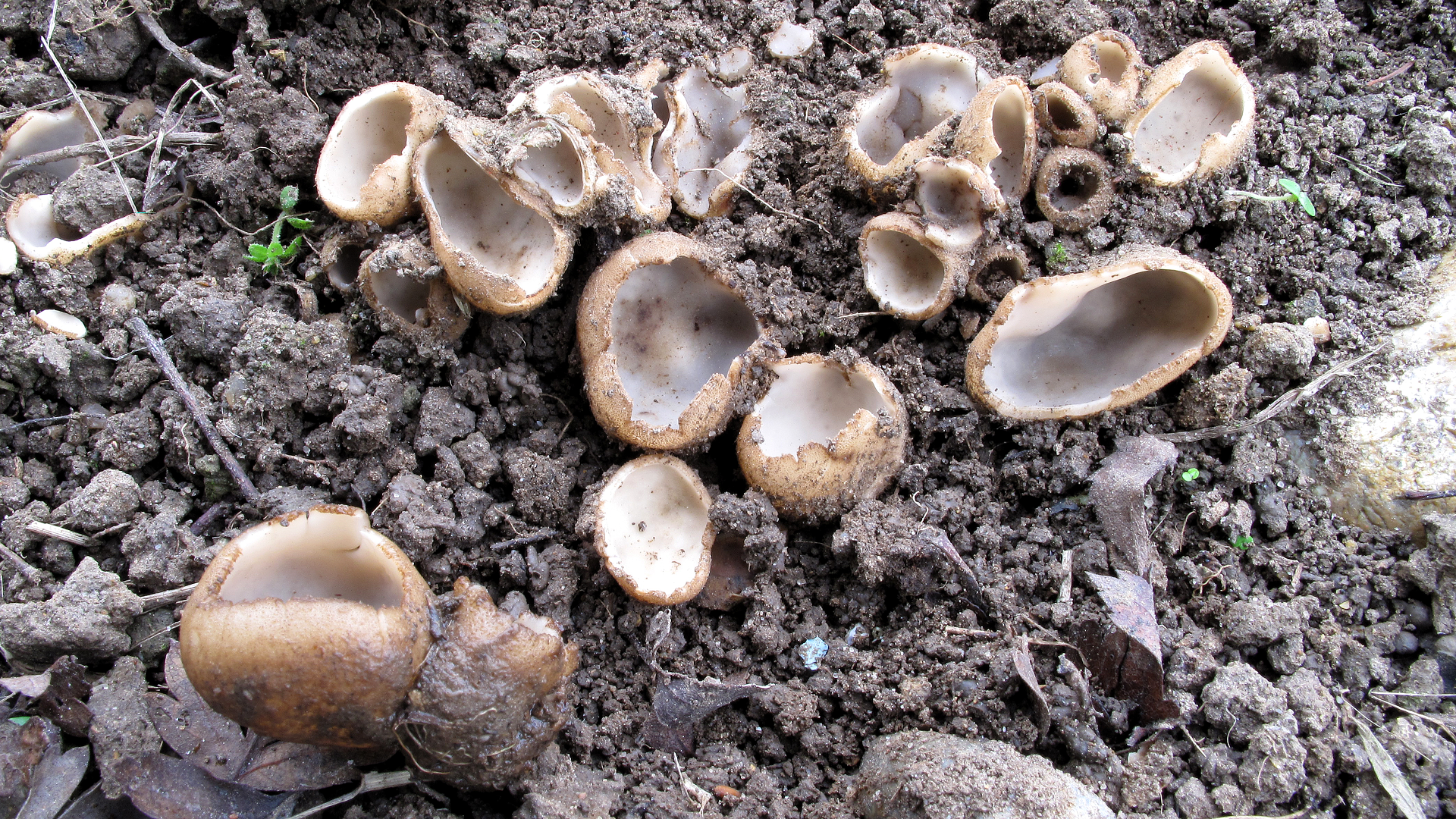
Name: Glazed Cup Humaria hemisphaerica
Description: Tiny cup fungus, 20 - 30mm across. The brown outer surface is covered entirely in stiff, brown hairs.
Habitat: Has a preference for soil and rotten hardwood.
#
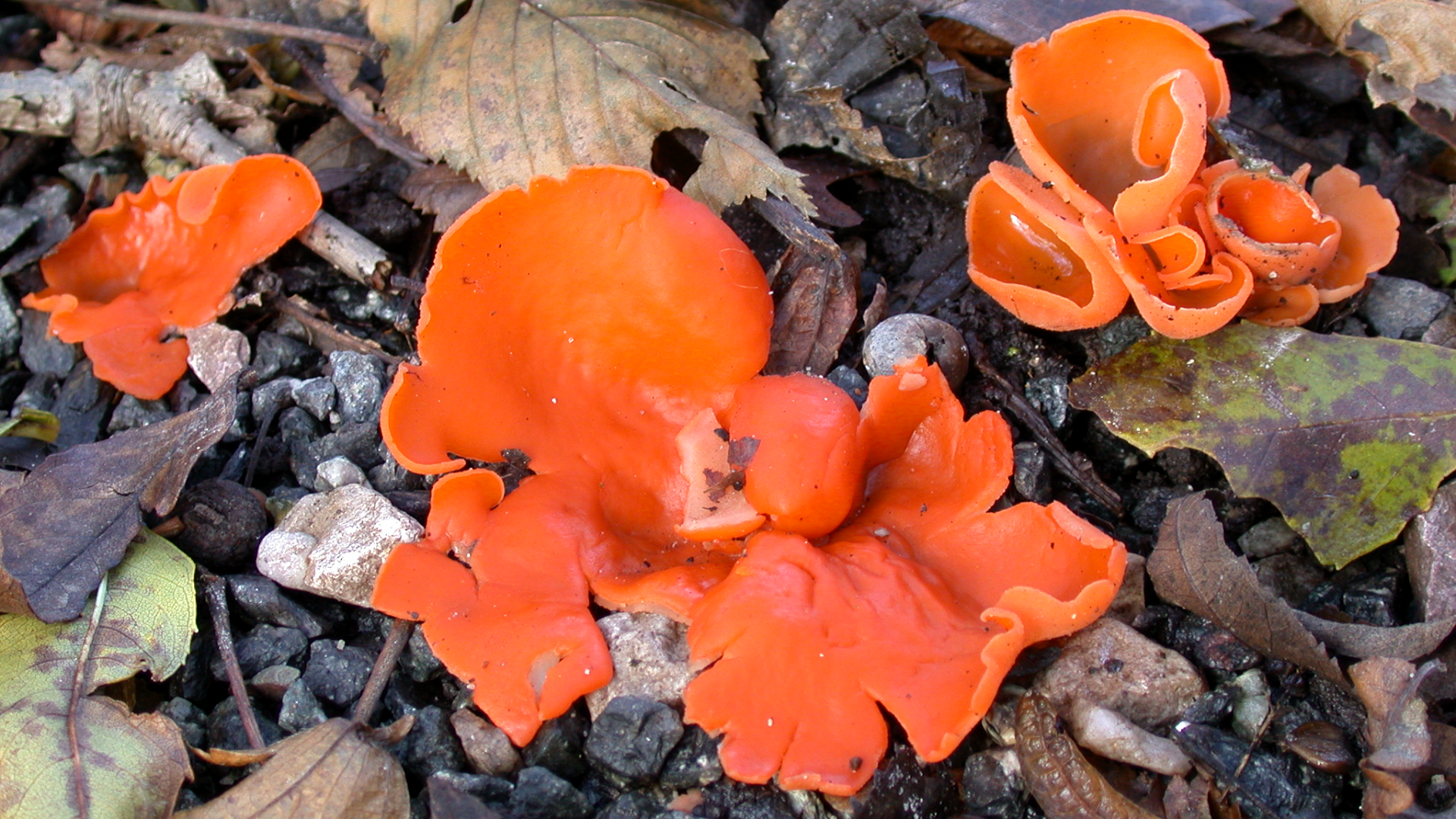
Name: Orange Peel Fungus Aleuria aurantia
Description: The bright orange cups often resemble orange peel. Its cups, 1 - 4cm across, are often misshapen due to being crowded together with other fruiting bodies.
Habitat: Found on disturbed soil near woodland paths with a preference for exposed locations. As well as Hainault Forest, this species has also be seen in All Saints Graveyard at Chigwell Row.
#
© hainaultforest.net. All rights reserved.


